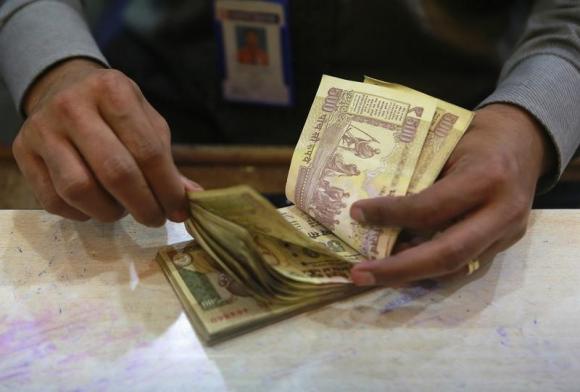Mumbai: For those who are euphoric over the Moody’s recent outlook upgrade on India’s growth prospects, Standard and Poor’s (S&P) note on Monday is a timely reminder of the true state of affairs on the ground.[caption id=“attachment_2150381” align=“alignleft” width=“580”]
 Economy still under pressure. Reuters[/caption] In a note issued today, the S&P said the progress made so far on the fiscal front still remain fragile and could worsen in the event of a financial or commodity shocks. “Although India’s budgetary performances have strengthened in recent years, its hard-won fiscal improvements could yet unwind because of a financial or commodity shock,” S&P has said. Translated, one should watch for any sharp reversal in the crude prices or deterioration in the domestic financial sector—both of them are concerns at this stage. In the absence of further fiscal reforms, it would be a difficult exercise for the government to step up public spending, necessary to push the economy back into the high growth trajectory. This is something even the economic survey 2014-15 pointed out, which said the process of reviving growth should begin by pushing public spending, before private sector arrives to the scene. The short message is this: Things have indeed changed for the better for the economy backed by the efforts by the NDA-government to unclog the system, cut down subsidies and bring in foreign investments, but it is too early to begin the celebrations, as yet. S&P highlights the high subsidy burden as the key area of concern, which remains despite fuel-subsidy reforms in 2014. High level of subsidies, in fact, limits the government’s ability to spend for the betterment of productive sectors. Petroleum and fertilizer subsidies constituted about half of the total subsidy spent of the government in fiscal year2015 and remains the biggest puzzle for the government. Also, government’s relatively small share of tax revenue can also act as a constraint to step up public spending in infrastructure, S&P said, citing this as one reason why public investment in India has been persistently lower than that of some other developing countries. “The central government appears intent to change this. It has bumped up capital spending for the fiscal year to March 2016 by more than 25 per cent, which is significantly higher than the average 5.4 per cent growth since fiscal 2011-2012.” The biggest of the financial sector reforms,
as Firstpost has noted before
, is rejuvenating the banking system, neck-deep in bad loans, capital woes and vague policy structure. Without banks are in a position to resume large scale credit expansion to industries, growth cannot be sustained. To be sure, the NDA-government has indeed taken the initial steps to push through the reform agenda and set the stage for fiscal consolidation, but there is more work to be done to take the reform agenda forward, before the celebrations can begin. S&P note is, perhaps, a warning to those who celebrate early. (Data support from Kishor Kadam)
Economy still under pressure. Reuters[/caption] In a note issued today, the S&P said the progress made so far on the fiscal front still remain fragile and could worsen in the event of a financial or commodity shocks. “Although India’s budgetary performances have strengthened in recent years, its hard-won fiscal improvements could yet unwind because of a financial or commodity shock,” S&P has said. Translated, one should watch for any sharp reversal in the crude prices or deterioration in the domestic financial sector—both of them are concerns at this stage. In the absence of further fiscal reforms, it would be a difficult exercise for the government to step up public spending, necessary to push the economy back into the high growth trajectory. This is something even the economic survey 2014-15 pointed out, which said the process of reviving growth should begin by pushing public spending, before private sector arrives to the scene. The short message is this: Things have indeed changed for the better for the economy backed by the efforts by the NDA-government to unclog the system, cut down subsidies and bring in foreign investments, but it is too early to begin the celebrations, as yet. S&P highlights the high subsidy burden as the key area of concern, which remains despite fuel-subsidy reforms in 2014. High level of subsidies, in fact, limits the government’s ability to spend for the betterment of productive sectors. Petroleum and fertilizer subsidies constituted about half of the total subsidy spent of the government in fiscal year2015 and remains the biggest puzzle for the government. Also, government’s relatively small share of tax revenue can also act as a constraint to step up public spending in infrastructure, S&P said, citing this as one reason why public investment in India has been persistently lower than that of some other developing countries. “The central government appears intent to change this. It has bumped up capital spending for the fiscal year to March 2016 by more than 25 per cent, which is significantly higher than the average 5.4 per cent growth since fiscal 2011-2012.” The biggest of the financial sector reforms,
as Firstpost has noted before
, is rejuvenating the banking system, neck-deep in bad loans, capital woes and vague policy structure. Without banks are in a position to resume large scale credit expansion to industries, growth cannot be sustained. To be sure, the NDA-government has indeed taken the initial steps to push through the reform agenda and set the stage for fiscal consolidation, but there is more work to be done to take the reform agenda forward, before the celebrations can begin. S&P note is, perhaps, a warning to those who celebrate early. (Data support from Kishor Kadam)
Keep euphoria in check: S&P warns India's fiscal worries far from over
FP Editors
• April 14, 2015, 09:23:57 IST
S&P highlights the high subsidy burden as the key area of concern, which remains despite fuel-subsidy reforms in 2014.
Advertisement
)
End of Article